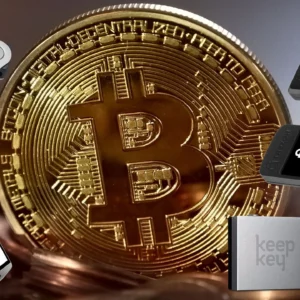Numerous institutions seem to have become aware of Bitcoin as a substitute asset thanks to the Bitcoin ETFs. Will the trend pick up speed after the April halving?
The quadrennial halving event of Bitcoin, which lowers block rewards received by miners by 50% and is crucial to the system’s security and transaction validation, is still mostly understood.
Will miners abandon the network or go bankrupt? Is the hash rate going to crash? Will Bitcoin’s price increase followed by a decline? Will the halving increase interest in cryptocurrencies?
However, one thing is for sure: The network is pre-programmed to reduce miners’ block rewards in half every four years. After the 210,000th block is validated in April 2024, miners’ incentives will drop from 6.25 BTC per block to 3.125.
Every halving has similarities and differences, but this year’s might be special due to the introduction of new Bitcoin exchange-traded funds (ETFs) for the spot market in January. These ETFs have helped push the price of Bitcoin to record highs and have nearly brought the market capitalization of the cryptocurrency industry to $3 trillion.
This begs still another question: Will the April halving quicken the trend, considering that the Bitcoin ETFs seem to have introduced Bitcoin as a substitute asset to many institutions?
Some people believe that. Swan Bitcoin’s head of business, Dante Cook, stated, “Institutions are still learning about this asset class, but understanding the monetary policy of Bitcoin will only drive more interest.”
According to Ethan Vera, chief operating officer of Luxor Technology Corporation, “Bitcoin security can continue despite a lower’security budget,'” and the halving is a significant example of this.
“We anticipate that institutional interest in the underlying commodity as well as the businesses involved, like miners, will persist.”
Cutting the block reward in half is certainly an encouragement for institutions looking to purchase the coin itself, according to Joe Nardini, senior managing director at B. Riley Securities. According to Nardini, this is another proof that the supply of Bitcoin won’t run out, which is a “net positive” for many potential institutional investors.
Some disagree, nevertheless, that the halving on its own will convince big businesses or financial institutions who are thinking about investing in cryptocurrency to adopt Bitcoin.
Director of Investment Banking at Stifel Financial Ruben Sahakyan stated, “The halving shouldn’t have an impact on whether large corporations/institutional investors will invest in Bitcoin for the first time.”
The net inflows show that investors have welcomed the spot market Bitcoin ETFs, and Sahakyan added that additional regulatory clarity will support industry adoption and investor base growth. But while they wait to see how the halving will affect miners’ profits and whether volatility will increase, some investors are staying away from mining equities.
Some others expressed the opinion that halvings might not be as dramatic as they once were.
According to Taras Kulyk, the founder and CEO of infrastructure company SunnySide Digital, “the halving is likely not as big an event as the industry is well prepared and has been deleveraging in anticipation of the potentially reduced economics.” “In addition, transaction fees have increased due to the massive growth of L2 technologies on top of the Bitcoin Network, further mitigating the impact of the halving.”
An Increase “caused by halving”?
Previous halvings of Bitcoin have seen price increases in the months preceding them; this occurrence is scheduled for 2024. In fact, at the end of February, a JPMorgan analyst spoke of a “Bitcoin-halving-induced euphoria” that was engulfing the cryptocurrency market. Is that actually the case, though?
The director of research at Fidelity Digital Assets (FDA), Chris Kuiper, stated that there are now two main narratives and drivers for Bitcoin. First, spot Bitcoin ETPs (exchange-traded products) were recently approved, marking a significant turning point in the cryptocurrency’s history and paving the way for further adoption.
Kuiper went on, “The second is the impending halving.” It is anticipated that the Bitcoin network itself would remain mostly unaffected, as in the past. The hash rate may initially decline, but it will probably only take some time for it to rise back to its prior levels and continue to do so. This won’t have an impact on how the network functions.
Which of these two incidents has had a greater effect? We don’t know if the price increase is the result of the Bitcoin ETF approvals for the spot market or the halving, according to B. Riley Securities’ Nardini, but he believes it is more likely “ETF induced.”
The JPMorgan analyst cautioned that following the halving, the price of Bitcoin would go as low as $42,000. That would also be in line with previous halvings. The Bitcoin network is more secure because of its hash rate, or the total processing power of the network. The hash rate originally decreased over the last three halvings (2020, 2016, and 2012), but it swiftly increased during the next six to thirty-one days.






